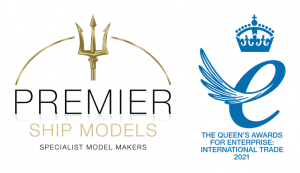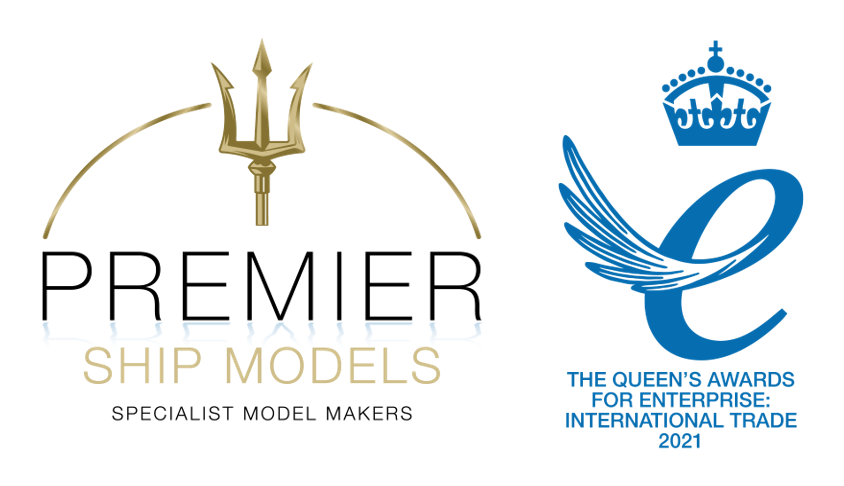Premier Ship Models recently received a request from the M/S Maritime Museum of Denmark. They ordered two models, one being an oil tanker model ship, and the other being a bulk carrier model. The name of the oil tanker was the Torm Laura, and the bulk carrier was a Toucan Bulker built by Lauritzen.
J. Lauritzen is a Danish shipping company, and they operate all across the globe. Their headquarters is located in Hellerup, Denmark.
Torm Laura was built in 2008, whilst the Toucan Bulker was built three years later, in 2011. They both sail under the Danish flag.
The M/S Maritime Museum of Denmark encompasses the nation’s expansive naval history to an excellent degree. Denmark have cemented themselves as one of the world’s most innovative maritime countries. The museum’s patron is Queen Margrethe II, the Danish monarch, and Europe’s current longest-serving head of state.
As previously mentioned, the museum is located in Helsingør (Elsinore in English), and this small city in eastern Denmark is best known for its shipping history, culture and maritime heritage. Perhaps most notable about Helsingør is Kronborg Castle, where the M/S Maritime Museum of Denmark was originally constructed. Moving to the new docks allowed for a much-needed opportunity to rework the general layout and structure, and exhibit Denmark’s rich naval history in a brand new light.
The museum itself is actually not brand new. Whilst it received significant improvements and renovations in 2013, as well as being moved away from Kronborg Castle, the M/S Maritime Museum of Denmark has actually been around since 1915. It was formerly known as the Trade and Maritime Museum.
As a piece of infrastructure, the museum itself is beyond impressive. The state-of-the-art architectural environment was designed by Bjarke Ingels Group, winner of over 20 architectural awards across both Denmark and the USA.
The museum provides an opportunity for people all over the world for people to learn about Denmark’s naval heritage, as well as ships such as the Lauritzen bulk carrier, and the Torm Laura oil tanker. We’re honoured to have been able to create two models for them.
From the very beginning, it was clear that this contract was an opportunity we couldn’t turn down. It was always going to be a challenge, but certainly a welcome one. As with all of our corporate projects, extensive research was made to ensure the accuracy of the models.
The two models of the Torm Laura and the Toucan Bulker were to be of the utmost realism and intricacy. To achieve such high levels in these areas, we liaised closely with the client. Additional research was also devoted to the project, guaranteeing the authenticity of each model was up to scratch.
Talking frequently with the client throughout the building process ensured that both models were made completely to fit their exact requirements. This relates to specifications such as colour schemes, structures and general measurements. It also guaranteed absolute transparency, in the sense that the museum could visibly see the progress of their order.
Our model renditions of the Torm Laura and the Toucan bulk carrier were made in our workshop in Mauritius. Before any construction could be done, agreements were made between PSM and the M/S Maritime Museum of Denmark. Dimensions, details and aesthetics needed to be established, as well as the financial side of things, together with a schedule.
The M/S Maritime Museum of Denmark wanted two extraordinarily large models for their exhibit, and so the Toucan bulk carrier measured in at 407cm in length, 75cm in width, and 100cm in height, with the Torm Laura measuring in at 400cm by 75cm by 100cm.
With most models, the hull is the first ‘main piece’ to be constructed, measured precisely to fulfil the specific requirements. This provides the model makers with what is essentially a base, and so they can then visualise the rest of the model more easily.
We had never been tasked with building models at such scale before, and so we thought it sensible to follow a similar pattern as we have done with previous projects. This relates to things such as finding the ship plans so that we could build an accurate replica. Finding the ship plans can sometimes be fairly difficult, and when the model is to be as large as this one was, interpreting the plans proved to be a challenge. The model builders could then continue working on the hull, incorporating their usual methodology, but just to a much larger scale.
After the main body had been completed, the model makers moved on to smaller details such as the bridges, stairs, decking and lettering. Smaller is of course comparative, as these sections required immense levels of tenacity and precision.
Once the entirety of the models had been constructed, painting could begin. Some of the parts had already been painted so as to avoid drip marks, but the hull is usually left in case adjustments need to be made.
The models could then be transported to Denmark, ready to be displayed in the museum’s naval exhibit.
We delivered these models in 2013, when the museum was relaunched at the new docks. It was an absolute honour to have worked with them, and we couldn’t be prouder of the final result.
Making models of this calibre was no small feat, but we’re more than satisfied with how they turned out, and it was a privilege to be able to express our recognition of Denmark’s rich naval history, and all they’ve done for the maritime industry.
The project was completed on time and to an excellent degree of quality, and as previously mentioned, we couldn’t be more thrilled with the end result, and how well each model encapsulates Denmark’s maritime history.
Commission your own model
If you would like to have your own bespoke model built, please complete the contact form below.


